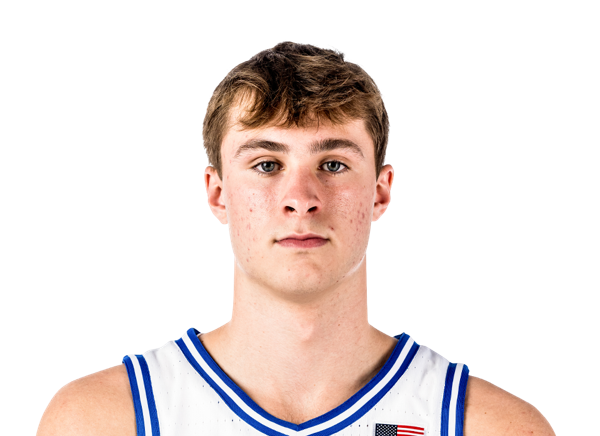Detailed Analysis
Offense
Cooper Flagg entered college basketball carrying enormous expectations, and while he didn’t immediately deliver highlight-reel performances at the volume some anticipated, his offensive development throughout the season has been remarkable. Early-season questions about his efficiency and shot-making have largely dissipated thanks to a dominant mid-season surge in both production and polish. Since December, Flagg has put up numbers that rival or surpass what Zion Williamson and other recent No. 1 picks posted during their most productive stretches.
Flagg’s scoring profile is diverse. He thrives in transition, works effectively in the short midrange with touch, and is able to create offense in half-court sets via isolations, post-ups, and pick-and-roll actions. While not an elite first-step creator, Flagg is intelligent about picking mismatches to exploit. Against switches, he’s shown the ability to shoot over smaller defenders or beat slower bigs off the dribble. His strength and coordination allow him to absorb contact and still finish plays with balance and control. Much of his damage comes when he's able to generate early offense or attack bent defenses, and his ability to run the floor and make decisions in real time is a major asset.
A key area of growth has been Flagg’s development as a shot creator. He has shown greater comfort attacking out of face-up situations and has improved his balance and footwork when creating space for pull-ups or floaters. His handle isn’t yet at the level of elite primary creators, but the progression is real, and he has started to tie together different parts of his offensive game in meaningful ways. The confidence and frequency with which he attempts threes, over 7 attempts per 100 possessions, reflect a willingness to stretch defenses, even if the mechanics are still stabilizing. His improved preparation, smoother load, and higher release point have contributed to a spike in shooting efficiency over the second half of the season, especially off the catch and when moving to his left.
More than just a scorer, Flagg has proven to be a highly capable playmaker. He sees the floor extremely well, whether he’s operating as a short-roll passer, initiating offense from the top, or improvising out of broken plays. His assist-to-turnover ratio of 1.5 stands above the average of recent No. 1 picks, even with his high usage rate. He manipulates defenders with his eyes and leverages his gravity to create clean looks for teammates, particularly on lobs and kick-outs. Duke has used him as both a primary ball-handler and a screener in two-man actions, and he’s shown the ability to read the floor dynamically out of both roles. As defenses collapse on him, he remains poised, often making the right read even as the angles shrink. This blend of scoring gravity and decision-making enhances his value as a connective offensive piece with real upside as a hub.
There’s still growth needed. Flagg’s handle can get loose under pressure, and he’s not yet comfortable stringing together multiple dribble moves at a high level against elite defenders. At times, his drives stall and result in spin moves or pivot-heavy improvisation that can bog down possessions. But his ability to recognize these moments and adjust is improving, and he’s shown an increasing tendency to simplify his reads and play more decisively. If he can add reliable off-the-dribble shooting and continue to refine his handle, Flagg could evolve into a primary option on a high-level offense. Even if that ceiling isn’t reached, his current trajectory suggests a high-efficiency secondary option who makes plays for others and scores in a variety of ways.
Defense
From the moment he stepped on the court at Duke, Flagg’s defensive engagement and instincts were apparent. Though his high school tape featured sensational help-side blocks and terrifying chase-downs, the college version of Flagg has traded some of that chaos for a more disciplined, system-oriented approach. Even so, he remains an impactful and versatile defender. His steal percentage of 2.7 and block percentage of 4.3 place him firmly among the elite defensive playmakers in college basketball, numbers that compare favorably to other recent top picks, including forwards and bigs.
What distinguishes Flagg on the defensive end is his court awareness and anticipation. He reads offenses several steps ahead and positions himself perfectly to make plays on the ball without gambling irresponsibly. His help rotations are timely, his hands are quick, and his contests are clean. He shows a strong understanding of scouting reports and demonstrates a high defensive IQ in closeouts, rotations, and recovery situations. Flagg's ability to stifle pick-and-roll actions, tag rollers, and recover to shooters all within the same possession highlights his cerebral approach.
While not a first-rate on-ball defender, Flagg is rarely out of position. He competes hard and absorbs contact well for his age, though there are concerns about his lateral agility and ability to mirror elite perimeter creators. He can play too upright at times and struggles to flip his hips when defending downhill guards. He’s not an Amen Thompson or Toumani Camara in terms of individual lockdown potential, but he compensates with positioning, length, and timing. The best use of Flagg defensively will likely be as a roamer or free safety, guarding the opponent’s weakest offensive player to maximize his ability to help and cover ground.
Flagg's competitiveness also sets him apart. He responds quickly to breakdowns and plays with an edge that reflects his deep pride in individual and team defense. His rebounding, particularly out of area, is outstanding, and his instincts as a weakside rim protector have led to a number of momentum-swinging blocks. He doesn’t shy away from physicality and frequently sets the tone with his effort on that end.
Ultimately, while Flagg may not anchor a top-tier defense on his own, his versatility, awareness, and impact as a secondary defender make him an essential part of any elite unit. He fits perfectly into modern defensive schemes that prioritize switchability, rotation speed, and communication, and he excels in all three.
Looking Ahead
There is no real debate about whether Cooper Flagg should be the No. 1 pick in the 2025 NBA Draft. Barring injury, he’s the clear choice: both because of his current productivity and his developmental upside. The better question now is: how great can he become?
Unlike past No. 1 picks who immediately dictated a team’s roster-building direction, Flagg isn’t a player who neatly fits into a singular archetype. Zion Williamson is a downhill powerhouse who demands spacing to operate, so you build around him with shooters. Victor Wembanyama simply needs someone to deliver him the ball and stay out of the way. Each of those players shapes the offensive ecosystem around them.
Flagg is different. He doesn’t yet possess a single dominant trait that teams can orbit around. Instead, his value lies in his elasticity. He can adapt to various roles, play on or off the ball, screen or initiate, attack or connect. This versatility makes him incredibly appealing but also means his arrival doesn’t dictate a narrow team-building blueprint. He won’t necessarily force a front office to reorient its philosophy, but he will elevate nearly any structure already in place. That kind of malleability is rare and incredibly powerful, but it also introduces more ambiguity than most No. 1 picks typically carry.
Still, Flagg's statistical profile is outstanding. He ranks near the top in almost every advanced metric for freshman and holds his own against the best No. 1 picks of the past decade. He’s logged a higher usage rate than most while maintaining strong efficiency, has a better assist-to-turnover ratio than many NBA lead creators had at the same stage, and his play on both ends continues to sharpen by the week. Comparisons to players like Scottie Pippen, Jayson Tatum, Andrei Kirilenko, and even early-career LeBron James are not unwarranted in terms of how Flagg impacts games across multiple dimensions.
What elevates Flagg from being merely "the best prospect in this class" to potentially becoming one of the best players in the league is his mentality. He thrives under pressure, plays better when angry, and never seems to take a play off. This kind of drive can often be a deciding factor in whether high-level prospects fulfill their potential.
There’s still uncertainty in what version of Flagg we’ll get. Perhaps he becomes a do-it-all connector who plays elite defense, spaces the floor, and makes high-level reads without needing to dominate the ball. That version of Flagg would already be a cornerstone player. But if the shot creation continues to progress, if his handle tightens, and if he becomes a true initiator in crunch time, then we’re looking at a perennial All-NBA selection and potential MVP candidate.
Flagg is not a perfect player, but he might be the most well-rounded and projectable young forward to enter the NBA in a decade. His floor is among the highest we’ve seen from a No. 1 pick in years, and his ceiling may still be rising. The question isn't whether he’ll be a star: it’s how bright that star will burn.
Analysis by ReverseEnigma



